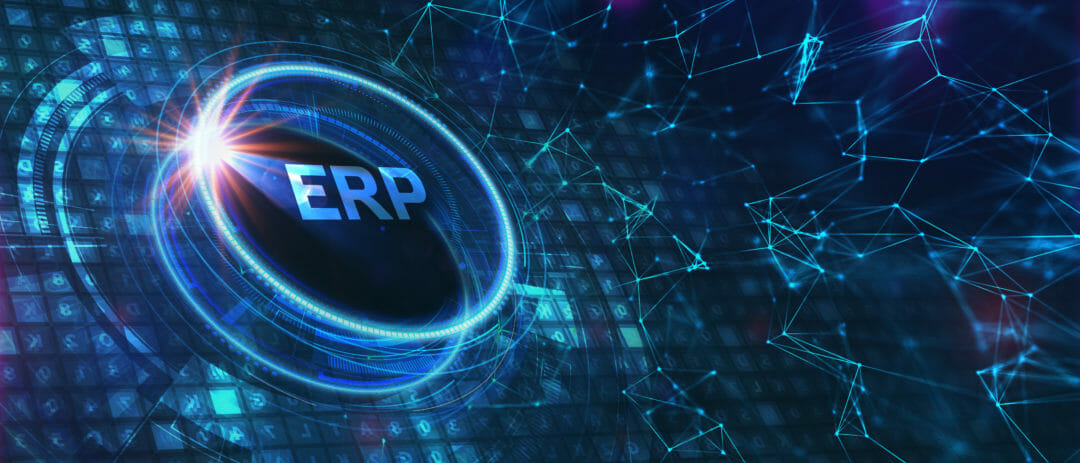The criticism commonly levelled against enterprise resource planning (ERP) systems is that they are monolithic and generalist software slabs: suites of applications, dense with features and functions, designed to cover just about any need an enterprise might have, with a uniform user interface layered over for a common look and feel. Whatever it is you’re trying to achieve, the ERP has it covered.
What they haven’t offered for the most part (at least without expensive customisation) is specificity and personalisation, and there has typically been no special guidance or features for individual industries. That absence has resulted in a weak user experience and a lot of squandered time and effort for the people using these apps.
But the new ERP is something different, with cloud services tailored to cater for specific use cases and vertical sectors so people, the most important assets of any organisation, can realise their full potential and focus on adding value rather than battling with recalcitrant software.
ERP is learning to reflect our changing habits
In a way, this is yet another example of the consumerisation of IT and the B2B world learning from the B2C world. In our everyday lives, we benefit from digital assistants like Alexa that deliver our news, play our favourite music and perform simple tasks such as reminders or shopping updates. This facility is entering our working lives via ERPs that help us to perform administrative tasks quickly and efficiently wherever we are. And by making systems proactive and easily extensible, it is possible to create applications that are not just generic, but conversational. The result is a new sort of ERP: Expert, Remote-friendly and Personal, delivering an experience that makes people more productive, fulfilled and loyal to their employers.
We can accelerate productivity by writing software that is bespoke to industry models, building in specialist industry knowledge and embedding best practices. The knowledge of a lifetime is effectively being codified so sophisticated business process models are generated by one-click processes across hundreds of actions that are common to sectors. This approach also helps to get rid of other unwelcome ERP associations: complexity, high costs and long deployment cycles.
How to deploy ERP in an agile manner
The ERP won’t be singular, but individualised for retail, manufacturing, healthcare or any other major sector. It will build in support for the processes that experience has shown are needed for that sector, and it won’t require external consultants to come in and add functions.
But there is more to the new ERP than adhering to industry templates. The modern user interface has moved away from the long menus and complex structures of old to a conversational UI with not just digital assistants, but also high levels of process automation and extensive use of AI and machine learning. Together, these mean that a lot of the heavy lifting work conducted by employees is replaced by the ability to simply approve proposed actions. An example: a piece of code for smart invoicing can, using machine learning, analyse how invoices were processed in the past, automate that process and prompt the use for sign-off.
AI and machine learning, together with predictive analytics, will be great enablers of the new ERPs. Today, we think of AI in association with components in simple process automation, but in future it will be applied far more broadly, monitoring everything that moves and getting rid of low-value chores.
Opening up ERP
Another example of the new ERP is that companies and partners can more easily create complementary apps and add-ins using open APIs in the cloud, low-code development environments and extension kits. In this way, ERPs can be extended to do anything from being themselves translated to another language to integrating with a CRM system or a personal calendar. This speeds up the pace of innovation for organisations and means they are not dependent on, or locked into, a single supplier but can access best-of-breed tools on a pick-and-mix basis.
Simpler integration will also be enabled by another big wave of change in the form of microservices. By writing ERPs in small code sets, it is simpler to slide in upgrades and enhancements. That also equates to reduced testing, lower risk of those add-ins creating dependency-related issues and faster remediation.
How to get your organisation ready for AI-powered ERP
Mobile-enabled future
Another area of focus will be mobile and ensuring that the ERP can be viewed on any device and that simple common actions, such as filing an expense claim, can easily be taken. In the Covid era, we have doubled down on our need to support remote workers and being built in the cloud helps hugely.
In future, you can expect our ERPs to be smarter, yet using context-sensing to make smarter decisions on our behalf. Location awareness will help, but there could even be an emotional component with moods detected by facial analysis, voice, text or an action taking too long or having to be repeated. The new, sensitive ERP will know how to relate to its human companion, perhaps asking if they can help or suggesting a different approach.
The new ERP is a world away from the old ERP. Monolithic software is replaced by composite, loosely federated applications. Ten-year projects and stratospheric billable hours will belong to the ancient past. The future of ERP will see the initial ‘E’ be about experience, not enterprise, and all about the needs of people.











